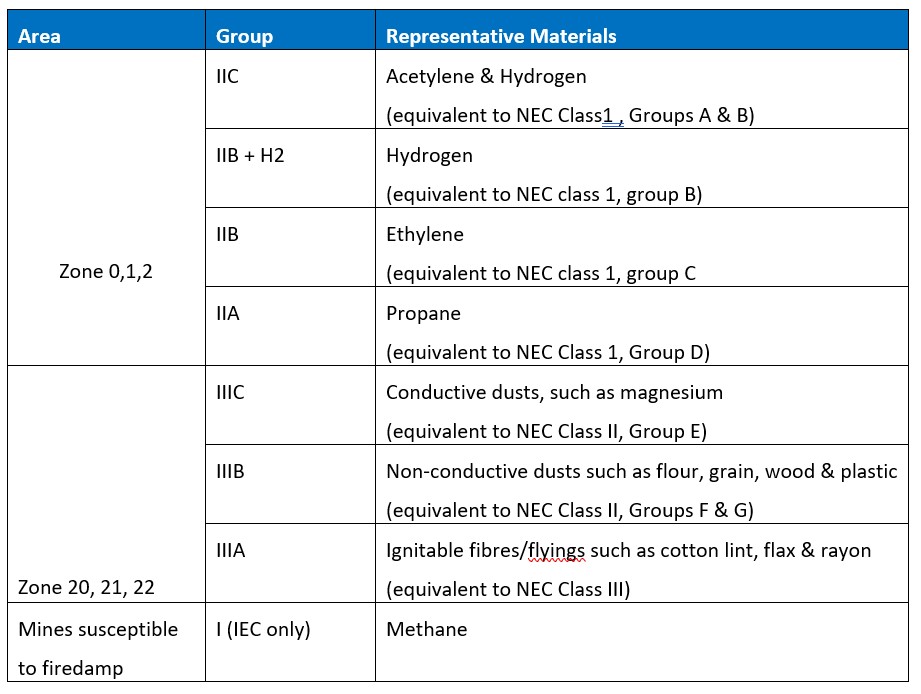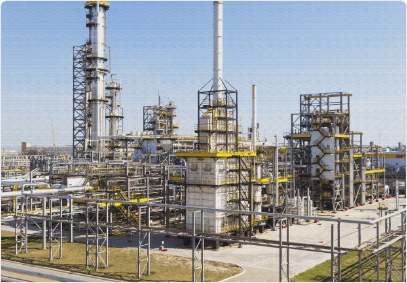The Greatest Guide To Roar Solutions
The Greatest Guide To Roar Solutions
Blog Article
Examine This Report on Roar Solutions
Table of ContentsThe Best Guide To Roar SolutionsRoar Solutions Fundamentals ExplainedThe Definitive Guide to Roar Solutions
In order to protect installments from a prospective surge an approach of analysing and identifying a potentially harmful area is required. The function of this is to guarantee the correct option and setup of equipment to inevitably stop a surge and to make certain safety and security of life.
(https://letterboxd.com/roarsolutions/)
No devices must be mounted where the surface temperature level of the devices is higher than the ignition temperature of the provided danger. Below are some usual dirt unsafe and their minimum ignition temperature. Coal Dirt 380C 225C Polythene 420C (melts) Methyl Cellulose 420C 320C Starch 460C 435C Flour 490C 340C Sugar 490C 460C Grain Dirt 510C 300C Phenolic Material 530C > 450C Aluminium 590C > 450C PVC 700C > 450C Residue 810C 570C The likelihood of the risk existing in a concentration high adequate to trigger an ignition will differ from location to area.
In order to classify this danger an installation is separated right into locations of danger relying on the quantity of time the harmful is existing. These areas are described as Zones. For gases and vapours and dirts and fibres there are 3 areas. Zone 0 Zone 20 A dangerous environment is extremely likely to be existing and may exist for lengthy durations of time (> 1000 hours per year) or perhaps continually Zone 1 Zone 21 An unsafe environment is possible but not likely to be existing for long periods of time (> 10 450 C [842 F] A classification of T6 indicates the minimal ignition temperature level is > 85 C [185 F] Harmful location electric equipment possibly created for usage in higher ambient temperatures. This would suggested on the rating plate e.g. EExe II C T3 Ta + 60C( This suggests at 60C ambient T3 will not be exceeded) T1 T1, T2, T3, T4, T5, T6 T2 T2, T3, T4, T5, T6 T3 T3, T4, T5, T6 T4 T4, T5, T6 T5 T5, T6 T6 T6 A T Class ranking of T1 indicates the maximum surface area temperature created by the instrument at 40 C is 450 C. Thinking the connected T Course and Temperature level score for the equipment are proper for the area, you can always make use of an instrument with a much more strict Division ranking than required for the location. There isn't a clear response to this inquiry regrettably. It truly does rely on the type of tools and what repair services require to be executed. Tools with specific test procedures that can not be carried out in the area in order to achieve/maintain third event rating. Need to return to the manufacturing facility if it is before the tools's service. Area Repair By Authorised Employee: Complex screening might not be needed nonetheless particular treatments might need to be complied with in order for the devices to keep its 3rd party rating. Authorised workers have to be used to perform the work properly Fixing have to be a like for like replacement. New component must be taken into consideration as a straight substitute needing no unique testing of the equipment after the repair is total. Each tool with a harmful ranking should be evaluated independently. These are outlined at a high level listed below, yet for even more detailed info, please refer straight to the standards.
A Biased View of Roar Solutions
The equipment register is a comprehensive database of equipment documents that includes a minimum collection of fields to recognize each product's area, technical criteria, Ex classification, age, and ecological data. This information is essential for monitoring and handling the equipment successfully within hazardous locations. On the other hand, for periodic or RBI tasting assessments, the quality will be a mix of Comprehensive and Close assessments. The ratio of In-depth to Close inspections will be identified by the Equipment Danger, which is assessed based upon ignition threat (the probability of a source of ignition versus the probability of a combustible ambience )and the dangerous location category
( Zone 0, 1, or 2). This variation will certainly likewise affect the resourcing requirements for job preparation. As soon as Lots are defined, you can establish tasting plans based on the sample dimension of each Whole lot, which refers to the number of random equipment things to be evaluated. To identify the required example size, 2 elements require to be reviewed: the dimension of the Whole lot and the category of evaluation, which indicates the level of effort that should be applied( decreased, typical, or boosted )to the assessment of the Great deal. By integrating the group of examination with the Whole lot dimension, you can after that develop the proper denial standards for a sample, meaning the allowable number of faulty items found within that sample. For even more details on this process, please describe the Power Institute Standards. The IEC 60079 standard advises that the optimum interval between assessments should not go beyond 3 years. EEHA assessments will also be performed beyond RBI campaigns as component of arranged maintenance and equipment overhauls or repairs. These examinations can be attributed toward the RBI example sizes within the influenced Lots. EEHA assessments are carried out to identify mistakes in electrical tools. A heavy scoring system is crucial, as a solitary tool may have numerous faults, each with varying degrees of ignition risk. If the mixed score of both inspections is much less than two times the mistake rating, the Lot is considered acceptable. If the Whole lot is still thought about unacceptable, it must go through a full examination or reason, which might cause stricter examination procedures. Accepted Whole lot: The sources of any type of mistakes are identified. If an usual failing mode is discovered, additional devices might require maintenance. Faults are identified by seriousness( Safety and security, Integrity, House cleaning ), guaranteeing that immediate concerns are evaluated and dealt with promptly to alleviate any kind of influence on safety and security or operations. The EEHA database must track and record the lifecycle of faults together with the rehabilitative activities taken. Implementing a robust Risk-Based Evaluation( RBI )method is crucial for making sure conformity and safety and security in handling Electrical Equipment in Hazardous Areas( EEHA) (electrical refresher course). Automated Mistake Rating and Lifecycle Monitoring: Easily take care of mistakes and track their lifecycle to boost assessment precision. The intro of this support for risk-based assessment additionally enhances Inspectivity's setting as a best-in-class option for regulative compliance, along with for any type of asset-centric evaluation use case. If you have an interest in discovering more, we invite you to ask for a demo and uncover how our option can transform your EEHA management procedures.
The Single Strategy To Use For Roar Solutions

In terms of eruptive danger, a dangerous area is an environment in which an eruptive environment exists (or may be anticipated to be existing) in amounts that require unique safety measures for the building, installment and use of equipment. Roar Training Solutions. In this write-up we explore the obstacles faced in the office, the risk control actions, and the needed expertises to work securely
These compounds can, in particular conditions, develop explosive atmospheres and these can have significant and awful effects. Many of us are familiar with the fire triangular get rid of any one of the three aspects and the fire can not take place, yet what does this mean in the context of hazardous areas?
In a lot of circumstances, we can do little about the levels of oxygen in the air, however we can have considerable influence on sources of ignition, for example electrical equipment. Hazardous areas are recorded on the unsafe location category drawing and are determined on-site by the triangular "EX LOVER" indication. Right here, among other vital details, zones are divided into three kinds depending on the hazard, the possibility and duration that an eruptive ambience will certainly exist; Area 0 or 20 is deemed one of the most unsafe and see this site Area 2 or 22 is regarded the least.
Report this page